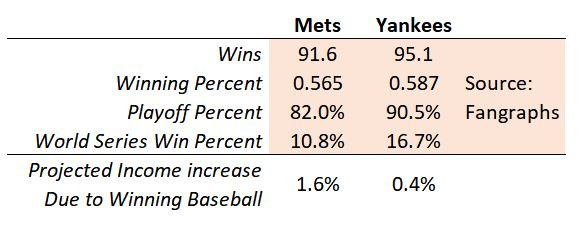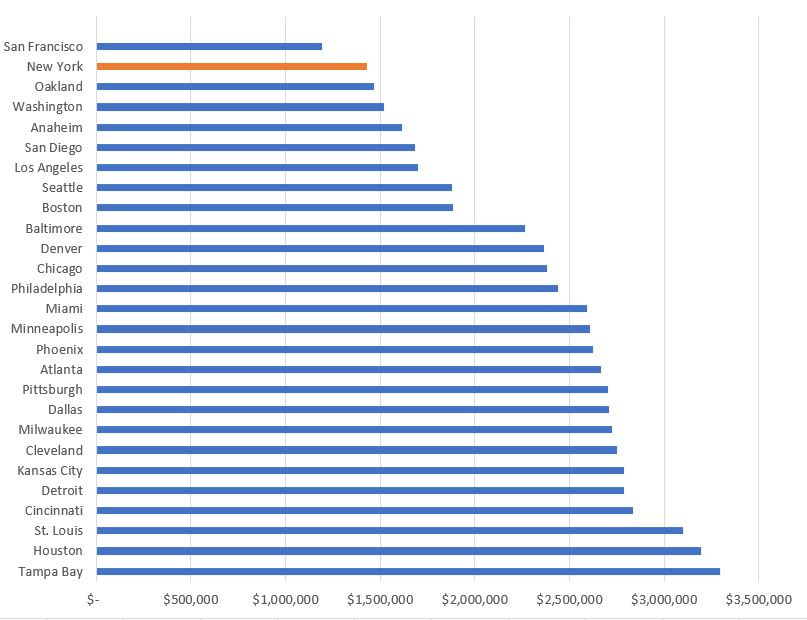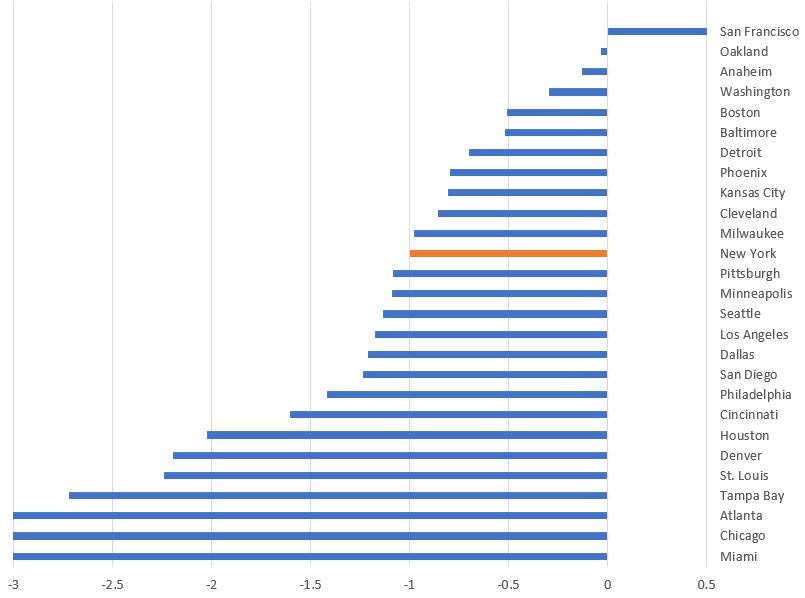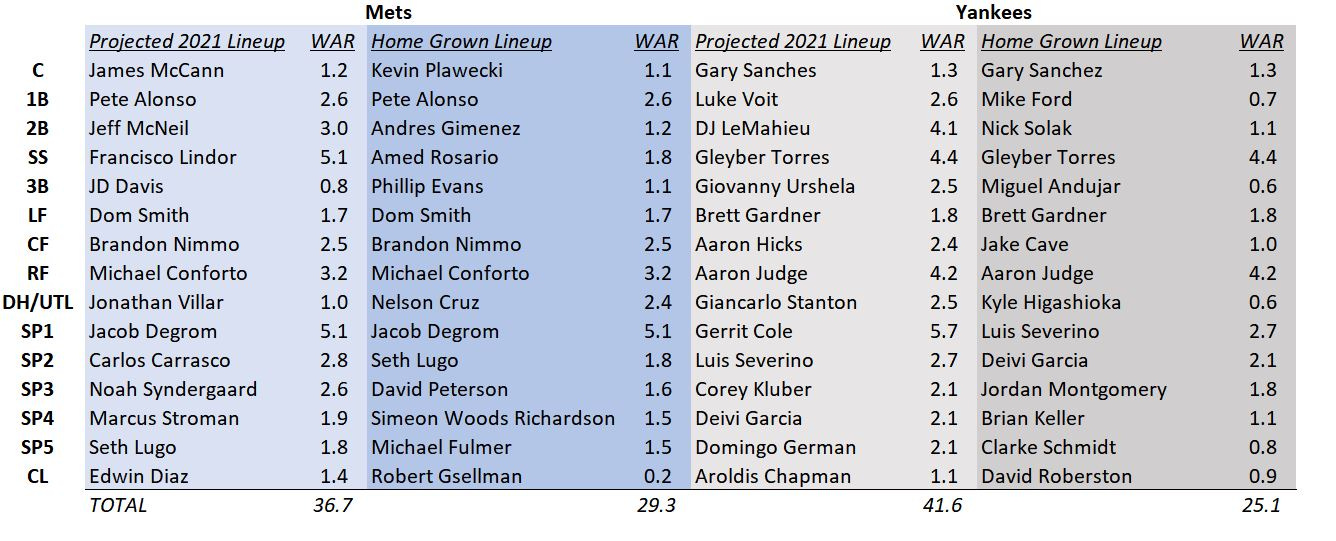Baseball is the perfect sport for this newsletter. There is a reason why Nate Silver first built a baseball projection tool (PECOTA) before concentrating on the presidential election (FiveThirtyEight.com). The data says with a bit of certainty what will happen next in baseball, but you can’t discount a strong element of randomness.
This creates a balanced ecosystem. Statistics provide a good strategy tool, but it is not the end-all source of knowledge. Statistics can optimize your chances to win, but human uncertainty is difficult to predict.
I have covered baseball already, but with the season starting (and fantasy drafts concluding) this week, it was time for 2xParked follow-up.
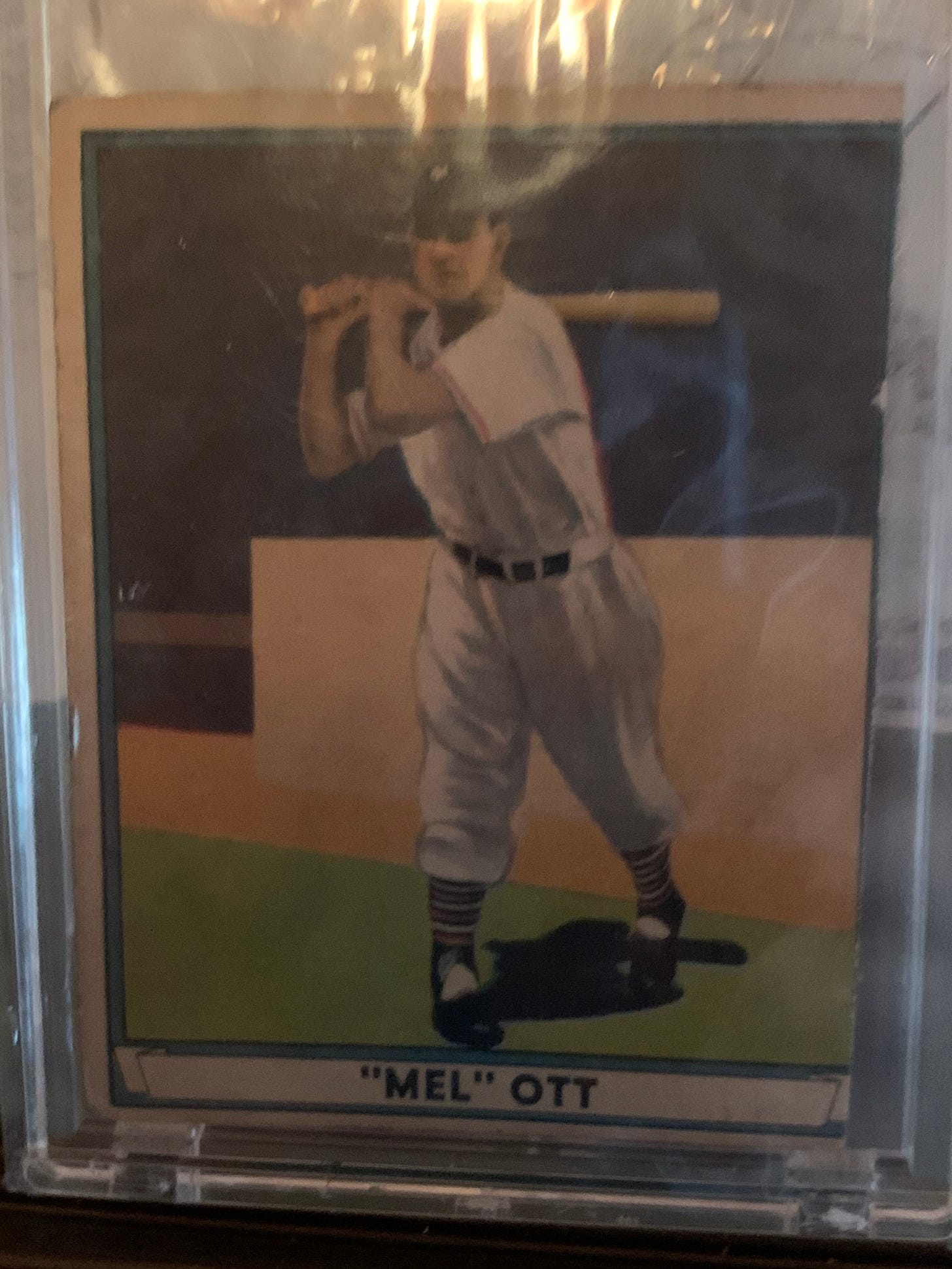
They Win, We Win
Anecdotally, it seems like whenever a NYC sports team is in a playoff race, there is a buzz throughout the five boroughs. Whether it is a crowded bar watching a tiny screen or a “hey, nice hat” when you are wearing a nice hat, there is an infectious positive attitude.
Several researchers have investigated if there are economic gains within a city associated with winning. The hypothesis is that the aforementioned positivity is actually representative of workers being more productive. Much of the research has dug deeper int the NFL, but I emulated this study (Davis & End 2010) using MLB data.
I estimated the projected gain of real income per capita in New York City (St. Louis Federal Reserve) based on the projected performance of our NYC baseball teams (Fangraphs). Here are the results based on the regression:
It looks like it might be a good season for our wallet! There are three caveats when looking at the increase in real income per capita.
These are not the only influences. Winning baseball might be a check in the plus column, but here are many other factors unaccounted for in this model.
There might be other confounding variables, and winning baseball may be correlated with something else.
The projected numbers are only an average. This does not represent the range of potential values, which is wide. This does not represent an increase for the individual, but rather the average for the city.
It gives good reason to root for the home teams. If they don’t win then we’re broke.
Coming to New York
In baseball, there is a concept called “free agent”. What this term means is that a player is not under contract and is free to sign with any team. This year, the median free agent signed a contract for $2.5M in 2021.
Each city has its own merit and value, but $2.5M can go further in some cities than in others. Using the cost of living calculator on NerdWallet, local tax rates, potential endorsements, and potential winning bonuses, here is how much $2.5M is worth in the US based cities which are home to a baseball team in NYC dollars.
For those of you New Yorkers who complain we are taxed too much and things are really expensive, you are right.
It is possible we are not asking the right question. It is not a matter of how much we are getting paid, but if the money is worth it. From Broadway to great food, NYC offers a unique combination of fun. Using the fun index of each city from WalletHub, we looked the % decrease in dollars is worth the % increase in fun of signing in New York.
Anything more than -1.0 means you are losing out on fun (Anaheim to Cleveland) and anything less than -1.0 means the higher salary is worth the less fun (Pittsburgh to Miami). When we account for fun, NYC is right in the middle. For the average player, there really is not much of a difference in choosing NYC over other cities to play ball, although if you are good and reading this article, come play for the Mets.
Down on the Farm
At a high level, there are two ways to build a baseball team. The first way is by developing talent. This involves signing a player as a 16 to 22yo and training the player for several years before they are ready to play on the team. This is the most equitable way to acquire talent. There is a draft based on team record for US-based players (worst team picks first) and there is a salary cap to sign non-US players.
The second way is what we usually associate with “buying a World Series”. You can acquire talent through trades or by bidding the most on free agents. This is where teams like the hometown Yankees have built their reputation.
As we mentioned above, Fangraphs projects the Yankees to win 95.1 games and the Mets to win 91.6. What would happen if both teams were not able to “buy” talent, but instead had to rely on the talent they developed. Using ZIPS (a player projection system from Fangraphs) and projected depth charts on Fangraphs (as of 3/24/21), I looked to answer this question.
Interestingly, the Mets would still have a winning team with 84 wins. They only lose 7.4 wins when counting only on homegrown talent. Meanwhile, the Yankees might have a losing record with 78 wins (-16.5).
The Mets have done a fairly good job at developing talent the past few years, but it does not mean the Yankees have “bought” wins. 40% of the loss of wins would be from players who the Yankees signed for cheap after being disregarded by their former teams.
MayorModel
A reader reached out to me with a great question: Does the order of the names listed on the ballot matter?
The answer is yes, order matters. The most famous study (Miller and Krosnik, 1998) estimated that a candidate received 2.3% more votes when listed first than when listed last. The effects were even stronger in non-partisan races (such as a democratic primary), but weaker in elections which received a lot of media coverage (such as a mayor primary).
Order might play a small but, potentially, significant role in the democratic primary. Given the media coverage, it is likely we will not see much of an impact on people’s first choice. With rank choice voting in play and a ton of candidates to choose from, as we start eliminating last-place candidates, 2nd and 3rd choice votes are more likely to be impacted by order.
The best way to mitigate this impact is to randomize the order of the ballot for every individual voter. If we were to use alphabetical order, Eric Adams would be the primary beneficiary. Andrew Yang would not necessarily be hurt by being last. The study found that name recognition neutralizes any impact of order, and there are not many candidates in this election who have more name recognition than Yang. We might see Stringer and Wiley more hurt by being near the button of a ballot.
With the updated contribution data, here is where we stand:
"Opening Day" was drawn by Ink&thyme, drawing life's unforgettable moments. For unique art drawn just for you, check them out on Facebook and on Instagram.
To subscribe to future or check out past newsletters, click here.
For more content, follow 2xParked on Twitter @2xParked.
Comments? Suggestions? Questions? Email me at 2xParked@gmail.com.




